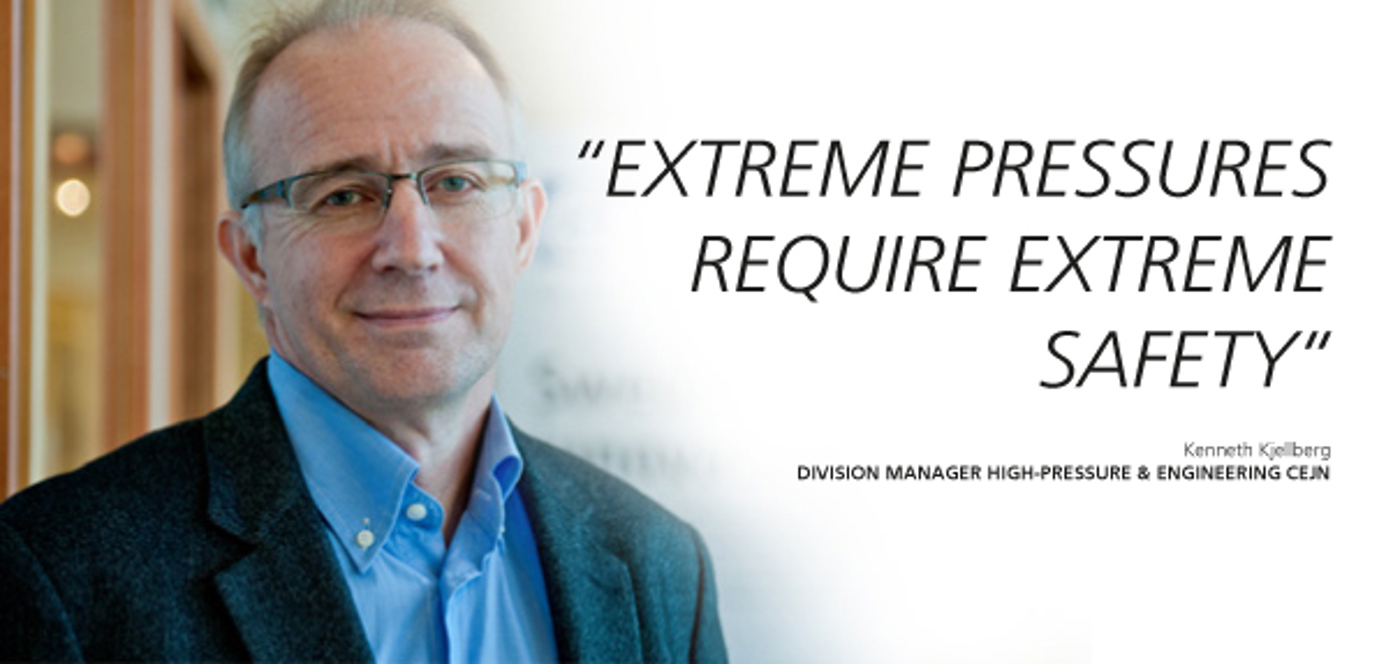Let's Talk Ultra High-Pressure Hydraulics

Ultra High-Pressure is a powerful medium demanding a high level of safety.The quick connect solution provider CEJN is familiar with the day-to-day routine of bolting, having more than 40 years’ experience in the high-pressure business. Kenneth Kjellberg, Division Manager High-Pressure & Engineering at CEJN, knows what it takes to keep you safe.
Success in using ultra-high pressure (UHP) hydraulics in applications such as rescue tools, bolt tensioning and hydraulic torque tools is highly dependent on a flexible hose and quick coupling technology. Imagine a situation where a ship’s mechanic needs to tighten a bolt on a large ship engine in the confined space of an engine room and you can immediately see the need for and importance of a fast and reliable connection method. To install an application with 6-8 tensioners and then have to fit hard piping between them would be a very time-consuming process requiring several hours of bending and cutting/threading steel tubes. Even at extreme pressures up to 400 MPa there is now a hose and quick connect technology that allows us to establish such a connection in just a couple of minutes.
The reason for such extreme pressures is of course to reduce weight and to develop more compact solutions. Increasing the pressure by two raises the possibility of reducing the area by two while maintaining the same force in your tensioner (Force = Pressure * Area). This simple correlation has led the UHP industry to constantly demand higher and higher pressures. Ofcourse, when a hydraulic system is pressurised to this extreme it also results in extreme levels of stress in materials. To avoid anyrisk of injury to users, materials and heat- and surface-treatment procedures have to be tested very carefully in order to ensure the proper combination of surface hardness – to carry the load from the locking balls – and toughness – to withstand the required number of pressure cycles without material fatigue. It is also of paramount importance to keep your processes and quality control measures in place in order to eliminate any risk of hydrogen embrittlement.

One of the critical points has been the connection between the hose end and the coupling/nipple. In the lowest pressure range of UHP hydraulics it is quite common to use NPT thread connections sealed with Teflon tape or liquid sealant. For cylindrical threads (BSP) a bonded rubber metal seal ring is also common. For pressures above 100 MPa it is all about trying to minimise the pressurised area and avoid the use of tape, sealants or washers. The proper method is to use a metal to metal sealing cone. Most cone systems have a male and female shape that has to be manufactured using special cutting tools. In the early 1980s CEJN developed a sealing cone, which is still manufactured today, that fits against a normal 120 degree drill cone. By using the standard drill cone and a CEJN Metal Seal (CMS) adapter a very safe and cost-effective seal is created. The CMS port dimensions are free for everyone to use.
To maintain user safety
A regular maintenance schedule is vitally important, given that the hydraulic pressure in the systems is the same as that used in a water jet cutting machine. With this in mind it is easy to imagine what potential accidents could happen if old or incorrectly maintained equipment is used. CEJN not only provides maintenance advice but also produces safety manuals on how to handle the hose and coupling kits in a safe way. To continue using UHP hydraulics successfully in more and more applications, it is hugely important to distribute information on how to operate and use UHP hydraulics in a safe way, download your copy: Safety Guidelines For Engine Maintenance Onboard Ships.